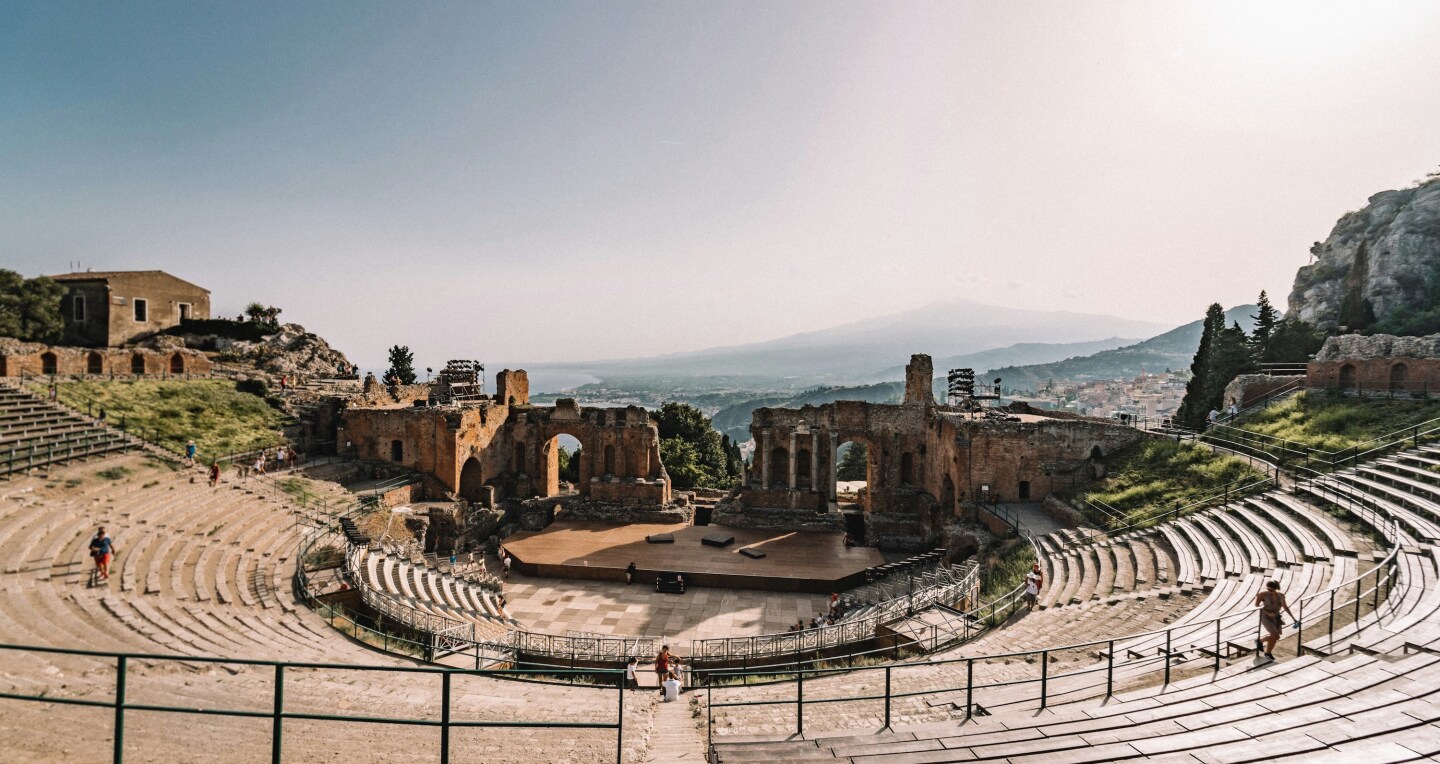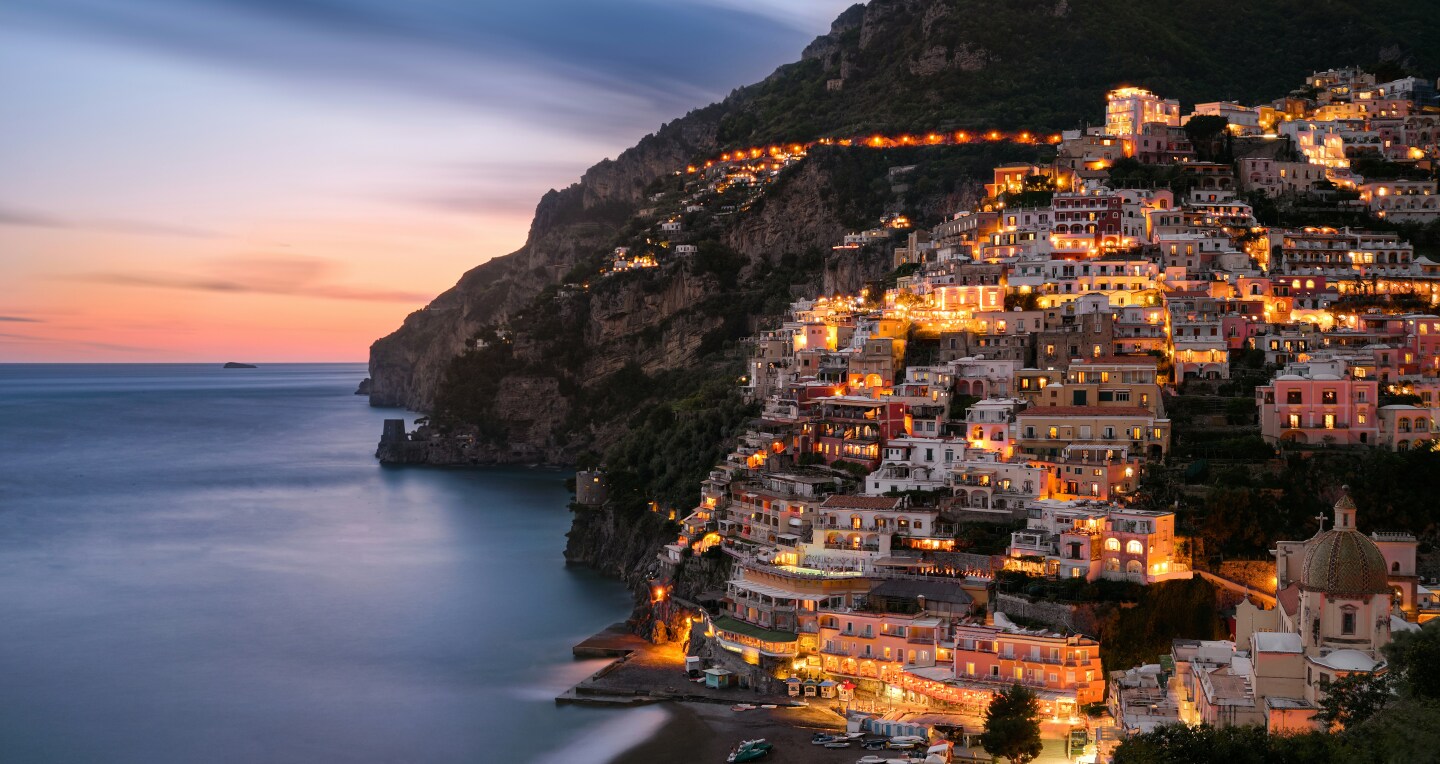Windstar’s Classic Italy & Dalmatian Coast cruise calls on the iconic cities of Venice and Rome, as well as stunning seaside ports along the shores of Italy, Croatia, Montenegro, and the island of Sicily. Traveling on board the 342-guest, five-masted Wind Surf, you can enjoy culinary excursions, wine tastings, strolls through medieval Old Towns, visits to ancient ruins, and introductions to traditional crafts, thanks to the many optional shore excursions available. Plus, you’ll have opportunities to see the filming sites of Game of Thrones in Dubrovnik and The Godfather and the second season of The White Lotus in Sicily.
Should you choose to extend your trip, you can also enjoy tours that depart before or after your cruise. The Vatican & Croatian Coastlines Cruise Tour includes a Vatican tour, Colosseum visit, and food market tour in Rome, and you can enjoy a picturesque overland tour of Lake Como and Venice on the Lake Como & Adriatic Romance Cruise Tour.
Itinerary
PLAN YOUR TRIP
Ride with a gondolier in Venice.
Photo by Matej Pribanic/Unsplash
Day 1Venice’s ancient waterways and St. Mark’s Square
If you’d like to spend more time in Italy, consider a Cruise Tour pairing your Windstar voyage with an overland excursion to Lake Como where you’ll visit the Villa Carlotta for a garden tour and wine tasting and take a scenic cruise on the lake. Then, return to Venice where you’ll spend one night in a luxury hotel and enjoy a guided tour of St. Mark’s Square and the iconic Rialto Bridge.

Rovinj at sunset
Photo by Ekaterina Polischuk/CC
Day 2Cobblestone streets and abundant seafood in Rovinj
An excursion to Porec includes tours of the 6th-century Euphrasian Basilica and the ancient remains of two Roman temples, followed by a wine tasting in the cellar of one of Croatia’s best-known winemakers. Alternatively, board an inflatable boat to explore Rovinj’s islands and Lim Fjord, one of the most beautiful fjords outside Norway. Istria is known for white truffles, olive oil, wine, and oysters (Anthony Bourdain was a fan), so consider stopping in a rustic konoba (tavern) for a lunch of truffle pasta.

The majestic waterfalls of Krka National Park
Photo by Simon Infanger
Day 3Split’s ancient palace and bustling harbor
Central to local life, Split’s outdoor market, Pazar, lets you experience the city’s true local spirit. Stroll what’s considered the “living room” of Split, the Riva, a promenade that dates to the reign of Napoleon, and relax on the central Bacvice Beach within walking distance from the pier.
For an adventure, take a thrilling inflatable boat ride to the medieval gem of Trogir, known for its magnificent 13th-century Cathedral of St. Lawrence, followed by an afternoon at a secluded pebble beach where you’ll enjoy swimming in crystal-clear water. Foodies will want to join the culinary excursion to a local market where they’ll accompany a chef to pick up organic ingredients and then prepare a feast accompanied by fine Croatian wines. Or visit the serenely beautiful Krka National Park, known for its majestic waterfalls.

Lovrijenac Fort, a location in a Game of Thrones
Photo by Zhivko Dimitrov/Unsplash
Day 4Dubrovnik, the “Pearl of the Adriatic”
Croatia makes wonderful wines, and you’ll have the opportunity to enjoy a tasting of top-rated vintages led by third-generation winemaker Andro Crvik at his vineyard in the picturesque village of Komaji. Or visit the Novakovic Family Village Estate in the charming village of Cilipi where the family has been producing brandy, wine, and olive oil for generations. Niko Novakovic will prepare a delicious meal featuring prsut (smoked ham) accompanied by local cheese and freshly baked bread. The star of the meal is peka, a traditional stew of veal, potatoes, and herbs cooked over hot coals.
To appreciate Dubrovnik from the water, consider a kayak excursion to Lokrum Island where you’ll explore the remains of a 12th-century Benedictine monastery and enjoy a picnic lunch on the beach before paddling back to your yacht—or spend the night on the town with plenty of time to explore.

Our Lady of the Rocks in Perast
Photo by Andrii Volkov/Pexels
Days 5-6Kotor a medieval gem with Europe’s southernmost “fjord”
An important artistic and commercial center in the Middle Ages, today Kotor is known for its picturesque Old Town (in walking distance of the pier), four Romanesque churches, and fortified city walls. The city has an Italianate feel as many of the Old Town’s structures were built by the Venetians between the 15th and 18th centuries and the main square is dotted with outdoor cafes. For hardy hikers, the panoramic view from St. John’s Fortress, an ascent of roughly 4,000 feet, is spectacular. Hike the wall to summit St. John Mountain where you can see equally stunning vistas of the bay from the Church of Our Lady of the Remedy.
A short drive from Kotor lies the seaside village of Perast where you’ll explore local churches before taking a private boat to Our Lady of the Rocks, a 17th-century church built on a small manmade island and best known for 68 stunning wall paintings by Tripo Kokolja, a local Baroque artist. Gourmands will want to visit the Moric Family home where the family produces the region’s only organic olive oil. After a short presentation by Ilija Moric, President of Montenegro Olive Oil Producers Association, enjoy a buffet lunch including locally smoked ham, bacon, sausages, homemade cheese, salad, and apple pie.
After departing Kotor, enjoy a day at sea where you can have a soothing massage in the new World Spa by Windstar or work out in the Fitness Center before settling into a lounge chair by the pool with a good book.

Teatro Antico di Taormina, a location in the second season of The White Lotus.
Photo by Federico Di Dio photography/Unsplash
Day 7The Greek Theater and Mountain Etna in Sicily
Taormina is best explored on foot as many of its streets are closed to traffic. Piazza IX Aprile, a panoramic terrace lined with Baroque churches and faded pink buildings, is the town’s loveliest square and locals often enjoy their evening passeggiata (stroll) here.
Godfather fans will want to take the “In Godfather’s Steps” excursion which visits the village of Savoca and Bar Vitelli, where in The Godfather I, Michael Corleone asked for the hand of Apollonia Vitelli and the Church of San Nicolò where the wedding took place. Forza d’Agro, which stood in for the town of Corleone in The Godfather II and III, is home to Cathedral St. Annunziata, which appeared in several scenes.
Mount Etna is famous for its volcanic wines and wine lovers shouldn’t miss an excursion to the family-owned Gambino Winery located on the eastern side of Mount Etna at 2,625 above sea level. Enjoy a wine tasting paired with local cheeses, olive oil, and other Sicilian specialties on the winery’s sunny terrace with fantastic views.

The white, pink, and yellow houses of Positano.
Photo by Sebastian Leonhardt/Unsplash
Day 8The Amalfi Coast of Sorrento and Pompeii’s ruins
Take a guided tour of Sorrento, stopping to admire the Romanesque cathedral with its marble bell tower and delicately crafted wooden inlay choir. Inlaid woodwork is a typical craft of Sorrento and makes an excellent gift (as does a bottle of locally made limoncello). Sorrento’s main square, Piazza Tasso, is named for a 16th-century poet and its fashionable Fauno Bar is a popular place to stop for an aperitivo.
The ruins of Pompeii and its inhabitants have been perfectly preserved since the eruption of Mt. Vesuvius in 79 C.E. On an optional excursion, you can explore the UNESCO World Heritage Site’s highlights including the world’s oldest surviving amphitheater, which was built in 70 B.C.E. and capable of holding up to 12,000 spectators; the Villa of Mysteries and its three remarkably preserved frescoes depicting the mysteries of Dionysus; and the House of Faun, one of the largest homes in Pompeii which shows how the elite lived. If you’re interested in the better-preserved remains of Herculaneum or the well-preserved frescoes of the Villa Oplontis in Torre Annunziata, consider booking a private tour.
For a distinctive view of the region’s stunning scenery, head down to the Watersports Platform to check out a kayak or a stand-up paddle board and explore the surrounding waters.
Positano, the site of white, pink, and yellow houses clinging to the hillside and the clear turquoise waters of the Tyrrhenian Sea, has attracted many authors, artists, and bold-face names including Steinbeck, Picasso, Leonard Bernstein, and Jackie Onassis. Visit the Church of Santa Maria Assunta with its colorful Majolica-tiled dome and 13th-century Byzantine icon of the Black Madonna and Child, which was said to have been smuggled by pirates. The main street, Viale Pasitea, is named for the goddess of rest, relaxation, and meditation, so where better to kick back in a cafe with a Sorrento spritz (made with limoncello and prosecco) and enjoy the view.

Exploring romantic Rome
Courtesy of Windstar






